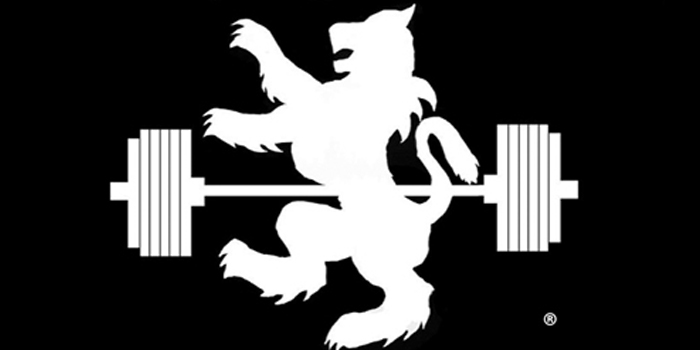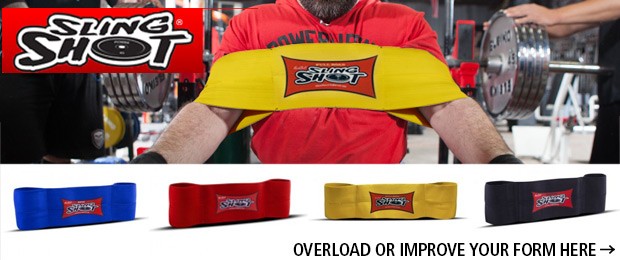
While my garage gym is incredibly well outfitted with elitefts equipment and enough plates for a collegiate field house, it doesn’t have all of the bells and whistles we had when operating Beast Training (Beast) in Connecticut. In Connecticut, among other things, we had a beautiful set of Troy Pro-Style Dumbbells — all the way up to 150 pounds (although the 150s collected a lot of dust between uses). When I relocated to Texas, those dumbbells didn’t make the trip. We couldn’t justify the shipping cost, and when fully racked they would have taken up a massive amount of space in the garage gym, which wasn’t practical given all we were trying to cram into limited space. (Not to get overly sentimental, but I can’t help but wonder where those massive Troys are today.)
When I initially left for Texas, the Beast facility was still in operation. I had temporarily left all the gym equipment behind. We would eventually sell some and some we would ship to Texas upon the close of the training facility. The only equipment I brought with me initially was an adjustable set of dumbbells from Iron Mind (Big Boy Dumbbell Bars) and a handful of the standard plates. It was all I could pack in my old Honda Accord. I almost didn’t take them. In retrospect, I’m glad I did. When I arrived in Texas, I lived in a one-bedroom apartment and utilized the dumbbells to do a lot of single-arm floor pressing — right in my unfurnished living room.
RECENT: A Message to Young Trainees: Pump Down the Volume
I was never able to adequately balance solid training and programming with all I was juggling at the time: the relocation, my new employment opportunity, and effectively commuting back and forth across the country for an extended period of time. 2013 was mostly a lost year concerning any real training progress, but the dumbbells helped me maintain sanity. You can feel some of my frustration in a piece a wrote for elitefts during that time.
The Iron Mind dumbbells are a bit unwieldy (i.e., they are 24 inches in length), but they are very sturdy and, needless to say, they can accommodate a large number of plates. With the plates I transported, I could easily make a pair of 120s, which isn’t bad for use in a home gym (or just floor pressing on your living room carpet). In the Texas garage gym, we have a selection of small dumbbells, but for any substantial pressing, we need to utilize the adjustable handles. Other than the Big Boy set, we haven’t been able to find any adjustable handles sturdy enough to survive hard, everyday use (e.g., the dropping on any failed repetition). We have bent (and trashed) more handles than I care to mention.
Rationale for Change in Assistance Exercises
I had been alternating between dips and close grip board presses as the primary assistance exercises during my max effort upper body days, but after experiencing some unusual elbow tenderness, I recently needed to find a substitute. I gravitated back to the incline dumbbell press, an exercise with tremendous benefits that I had not performed in a long time.
Advantages of the Incline Dumbbell Bench Press
Provides a Break from the Joint Pounding of Consistently Heavy Barbell Work
After over 30 years of training, my joints need a break from heavy barbell work from time to time. They can be temperamental, and I definitely need to be more sensitive to wear and tear (as well as prehab and rehab work). In Ben Pollack’s article, “Bodybuilding Exercises for Powerlifters — How to Use High Reps to Get Strong(er),” he offers the incline press as an option in his sample high rep training program. He cites the benefits of providing a break from the consistent joint pounding of high-percentage max lifting, as well as the mental break.
Shoulder Friendly While Adding Stabilizing Work
To piggyback on the aforementioned joint-pounding hiatus, I have found the dumbbell version of the incline press to be more shoulder friendly than its barbell cousin. Having the ability to better control arm placement along with the plane of motion has provided me with some relief. While this might not be true for all (because of the additional stabilizing work required), it might provide some joint relief for you as well. When working with dumbbells, because each arm is forced to work independently, the trainee gets the added benefit of recruiting additional stabilizing muscles, which improves overall strength and development (see below).
Hypertrophy, Muscle Engagement, and Range of Motion
I have found the incline dumbbell bench press to be beneficial at higher rep ranges. For powerlifters needing an alternative to max effort work, the higher rep training is conducive to hypertrophy (i.e., a great tool to build muscle). Concerning muscle engagement, the incline dumbbell bench press targets the upper chest, shoulders, and triceps. The use of dumbbells allows for a greater range of motion (a more significant stretch) which is not only beneficial for inducing hypertrophy, but can also assist in promoting balance across both arms.
Add It to Your Training
Particularly for an older trainee, the most challenging part of the exercise is the initial setup — predominantly when training alone. Getting the dumbbells in position without a spotter can be a chore, and if you are not used to it, it definitely takes a bit of practice. Once the setup is mastered, I have found the exercise to be an excellent complement to my max effort chest work. With a myriad of benefits, consider implementing in your own programming and rediscover another weapon in your training arsenal.










